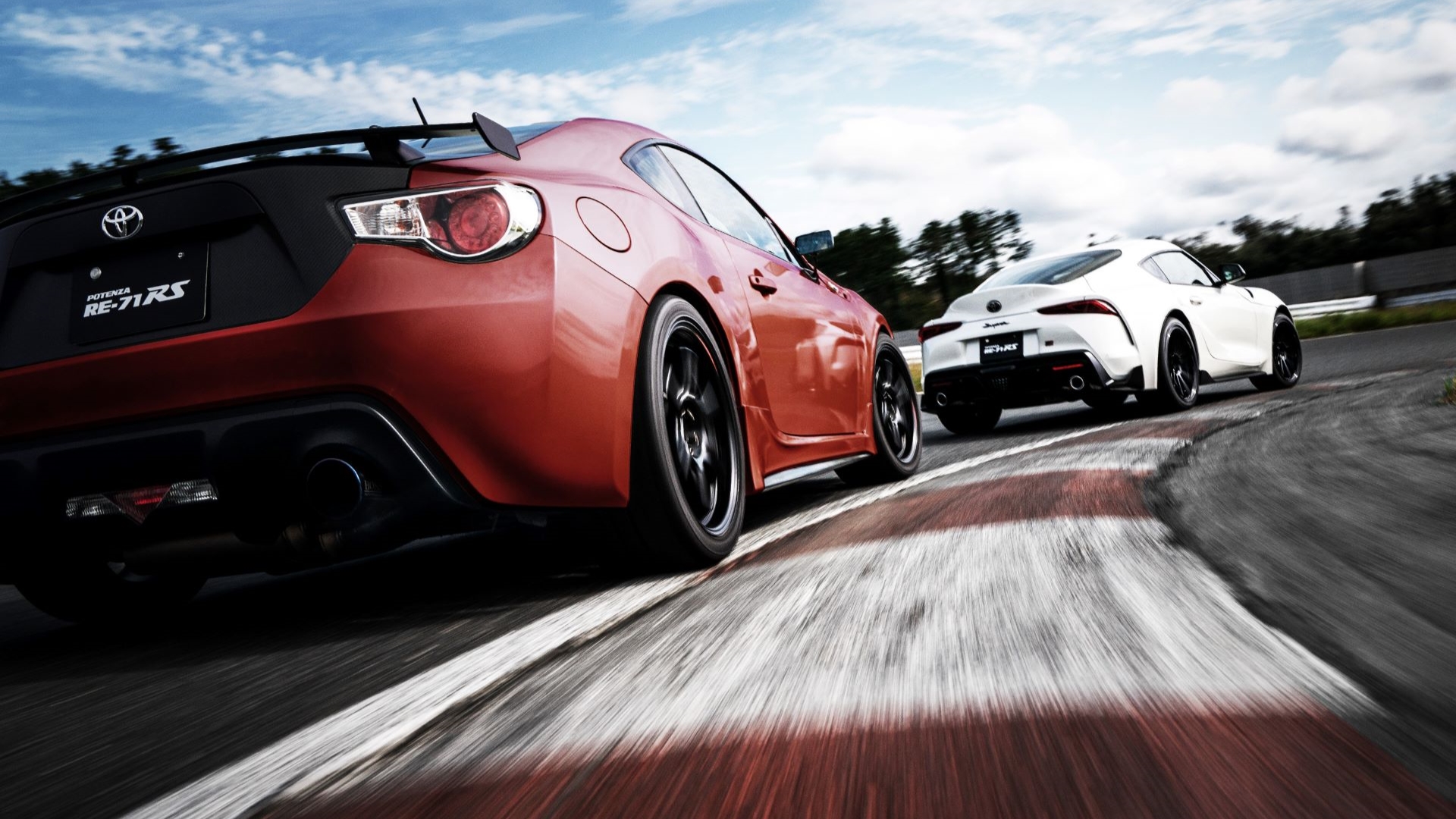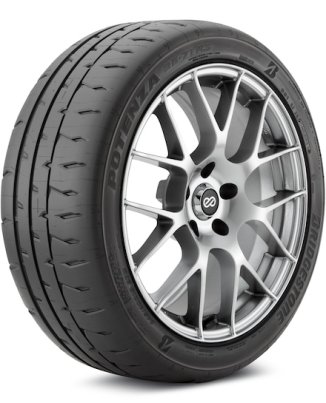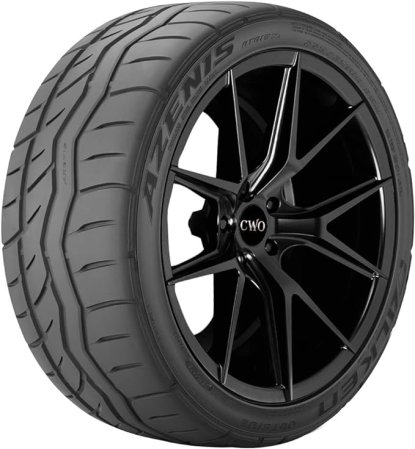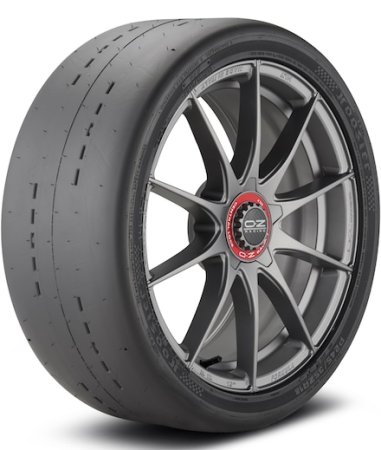We may earn revenue from the products available on this page and participate in affiliate programs. Learn more ›

I learned about autocross tires the hard way. Halfway into my third ever autocross run, my all-seasons and I plowed straight through a tight left corner. Fortunately, I didn’t damage my VW Golf, but those little orange cones never had a chance.
A great set of tires makes one of the biggest differences in how your car performs at an autocross event. The most popular category of tires is the Super 200s which are track-focused yet can still be driven on the street. These tires are competitive for club-sponsored events like autocross, time trials, and even some endurance events. They also won’t drain your bank account.
Best of all, they are well-matched for street cars, which means they are well-matched for the skills of the average amateur racer. That’s not to say these tires won’t keep you from mowing down orange cones, but for a weekend warrior using their weekday car, they are the best autocross tires.
Summary List
- Best Overall: Michelin Pilot Sport Cup 2
- Best Value: Falken AZENIS RT660
- Honorable Mention: Bridgestone RE-71RS
- Best Track Only: Hoosier R7
Our Methodology
Most experienced racers already have a tire preference. With that in mind, I approached this article from the standpoint of someone relatively new to the world of autocross. My knowledge about tires comes from a combination of experience and research. When in doubt, I tread lightly and seek out expert advice. My go-to resources are TireRack.com, which has a great mix of test data and individual reviews, and Grassroots Motorsports, which has a wealth of information for amateur racing. I leveraged all of these resources to compile this list of the best autocross tires.
Best Autocross Tires: Reviews & Recommendations
Best Overall
Michelin Pilot Sport Cup 2
Pros
- enormous amounts of grip
- one of the longer wearing track tires
- usable as a real summer tire if budget allows
Cons
- break away isn’t forgiving
- at its best when designed for a specific car
- affordability was never a priority
Best Value
Falken AZENIS RT615K+
Pros
- Good selection of sizes
- Deep tread and durable compound means long life
- A real value proposition for beginner racers
Cons
- Not the fastest tire out there
- Not the most precise
- Gives up some dry performance for wet
Honorable Mention
Bridgestone Potenza RE-71RS
Pros
- Exceptionally stiff construction for instant response
- Maximizes tread width utilization under hard cornering
- Compound designed for dry grip
Cons
- Punishing ride quality even for a race tire
- Literally unusable in cold weather
- Not as forgiving at the limit as competitors
Best Track Only
Hoosier R7
Pros
- Levels of grip you just won’t get from a full tread tire
- Takes skilled drivers with well tuned cars to another level
Cons
- Requires trailering car or changing tires at the event
- Hard sell as a value proposition
Our Verdict on the Best Autocross Tires
The Michelin Pilot Sport Cup 2 barely nudges out the Bridgestone Potenza RE-71RS for the top pick. You can’t go wrong with either tire, so it comes down to the number of laps and layout of the autocross course. For the best value, get the Falken AZENIS RT660. The Falkens offer great feel and excellent performance for a fraction of the price.
Features to Consider Before Buying Autocross Tires
There is a lot of info on tires — more than enough to cover several articles. To simplify things, there are three items to consider.
Tire Type
The type of tire is the first thing to consider. While some people run all-season tires in autocross events, most opt for high-performance summer or ultra-high performance summer tires because they are softer and provide more traction. The tradeoff is they don’t perform as well in wet or cold conditions.
Tire Size
When evaluating tire sizes, you need to look at the tire’s width and the sidewall’s height. The wider the tire, the larger the contact patch and the better the grip, which leads to faster lap times. Sidewall height comes into play for responsiveness. A shorter sidewall means less sidewall flex leading to faster transitions in corners.
Treadwear
Treadwear is based on actual tire testing compared to a baseline. Tires that are expected to last as long as the baseline reference receive a treadwear rating of 100. If they are expected to last twice as long, they get a 200 treadwear rating and so on. The lower the treadwear rating, the softer the tire and the more grip it provides. But a softer tire wears out faster, so you’ll buy tires more often.
Autocross Tire Pricing
Autocross tires start at around $150 for a tire like the Falken AZENIS RT660 in a 15-inch size and go to over $630 for a 19-inch Hoosier R7. The midpoint seems to be $250 to $300, where you’ll see tires like the Michelin Pilot Sport Cup 2 and Bridgestone Potenza RE-71RS in a 17 to 18-inch size.
FAQs
You’ve got questions. The Drive has answers.
A: A wider tire is almost always better if it fits. Even if it means going to a larger tire diameter.
A: Autocrossing can shorten the life of standard consumable items such as tires and brake pads, but it is extremely unlikely that it will damage your car.
A: Helmets must be worn for all track and autocross events. Helmets certified as meeting the most current or the two most recent applicable Snell, FIA, or SFI standards are acceptable.
A: Once again, the answer is the Miata…







